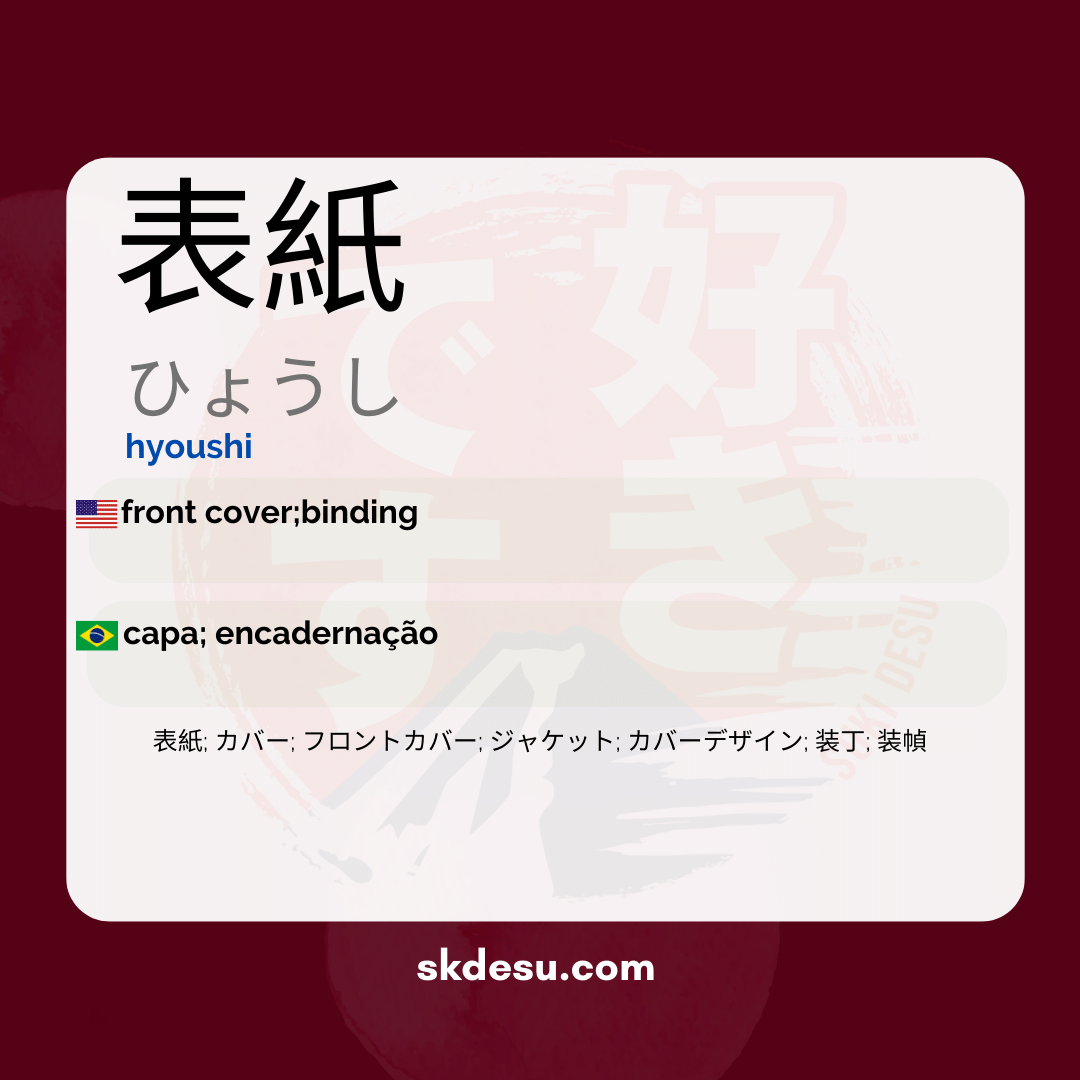Translation and Meaning of: 表紙 - hyoushi
"表紙" (hyoushi) is a Japanese word that means "cover." In a literary context, this term is commonly used to refer to the cover of books, magazines, or notebooks. The word is composed of two kanji: "表" (hyou), which can be translated as "front" or "surface," and "紙" (shi), which means "paper." Therefore, the etymology suggests the idea of a surface or face of paper that protects and introduces the internal content of a publication.
The origin of the ideograms that form the word 「表紙」 is deeply rooted in Chinese culture and tradition, which influenced the development of the Japanese language. The kanji 「表」 has its roots in the concept of something that is exposed or visible, while 「紙」 is related to writing materials and documents, reflecting the evolution of paper manufacturing and its use for communication and preservation of information.
In Japan, a book cover is not just functional; it also plays a significant aesthetic role. In many cases, the cover art of a book is considered an extension of the literary work, adding visual and emotional value to the reading experience. Covers may feature detailed illustrations, stylized calligraphy, and even special textures or materials, making the object stand out in a highly competitive market.
The word 「表紙」 is also used in metaphorical and symbolic contexts. For example, one might say that something or someone is apparent only on the "cover," without revealing the true "content," in reference to the Western expression "don't judge a book by its cover." This demonstrates how the word has expanded beyond its literal meaning, becoming part of everyday vocabulary in Japan, whether literary, aesthetic, or philosophical.
Vocabulary
Expand your vocabulary with related words:
Synonyms and similar words
- 表紙 (Hyoushi) - Book cover, the outer face of a book.
- カバー (Kabā) - Cover, a generic term for coating or protection.
- フロントカバー (Furonto Kabā) - Front cover, a reference to the front part of a book cover.
- ジャケット (Jaketto) - Cover, especially in media formats such as CD or DVD.
- カバーデザイン (Kabā Dezain) - Cover design, the visual and the art used on the cover of a book or product.
- 装丁 (Sōtei) - Binding, the design, and the way a book is bound.
- 装幀 (Sōhaku) - Binding, synonymous with 装丁, but can have a more specialized connotation in luxury editions.
Romaji: hyoushi
Kana: ひょうし
Type: noun
L: jlpt-n2
Translation / Meaning: cover; binding
Meaning in English: front cover;binding
Definition: The cover on the surface of a book, magazine, etc.
Quick Access
- Vocabulary
- Writing
- Sentences
How to Write in Japanese - (表紙) hyoushi
See below a step-by-step guide on how to write the word by hand in Japanese. (表紙) hyoushi:
Example Sentences - (表紙) hyoushi
See below some example sentences:
Kono hon no hyōshi wa utsukushii desu
The cover of this book is beautiful.
The cover of this book is beautiful.
- この - demonstrative pronoun that means "this" or "this here"
- 本 - noun meaning "book"
- の - particle that indicates ownership, in this case, "of the book"
- 表紙 - noun meaning "cover (of a book)"
- は - particle indicating the topic of the sentence, in this case "the cover"
- 美しい - adjective meaning "beautiful" or "beautiful"
- です - linking verb that indicates the state or quality of the subject, in this case, "is"
Other Words of this Type: noun
See other words from our dictionary that are also: noun

